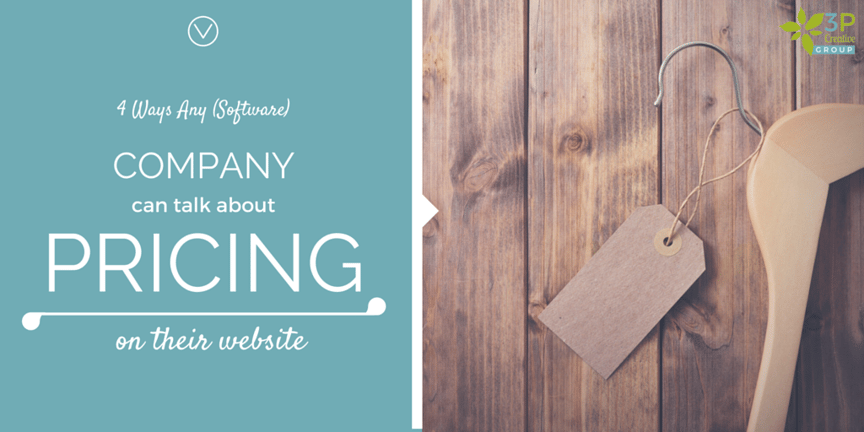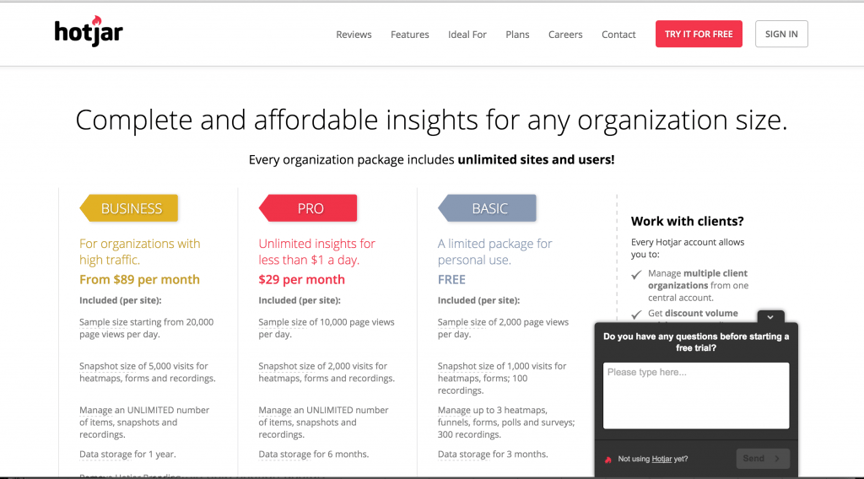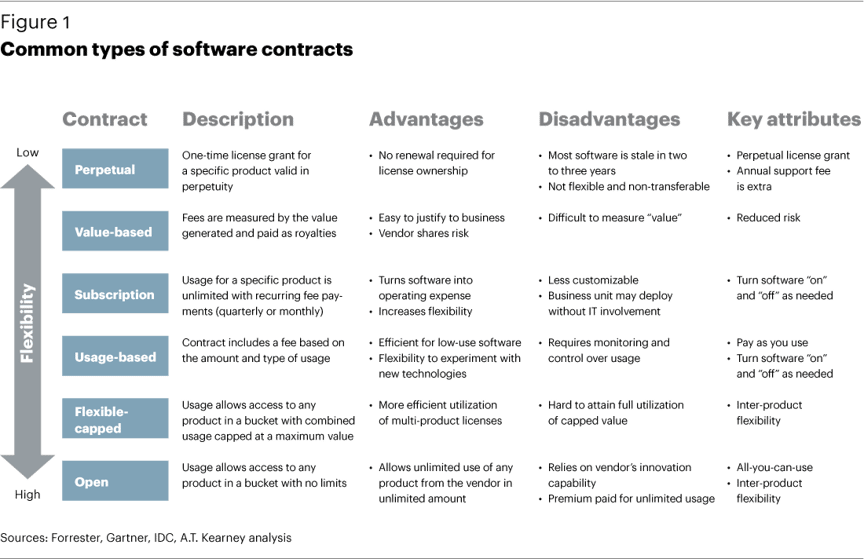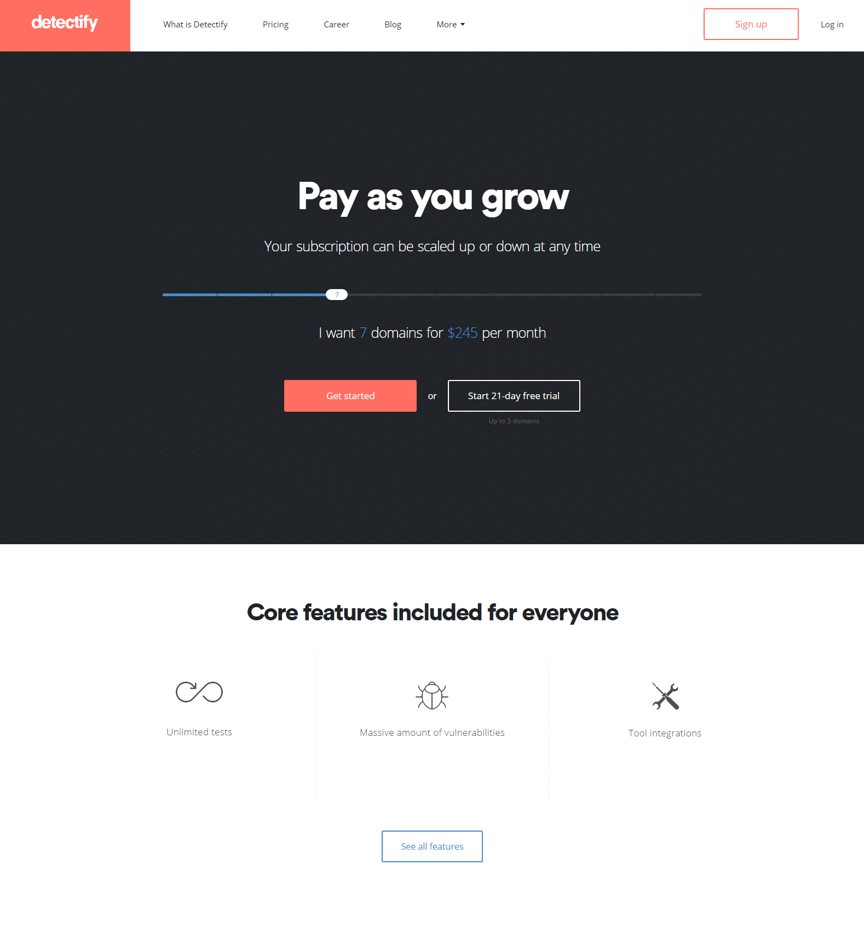4 Ways Any (Software) Company Can Talk About Pricing On Their Website
You know what happened every single time when I suggest putting the pricing information on the website with a client? I more or less always get adamant pushback! Usually it falls into one of these buckets:
- I don't want my competition to know what my pricing looks like.
- We don't do this in our industry!
- We don't want people to be scared off by our high prices.
- We have never done this before!
- Our CEO is against that!
- We customize our pricing based on the client's needs,
- We try to get away with as much as we can.
So let me ask you a question. Do you have pricing on your website? No? Why not?

There are many reasons that you and I can come up with why you should NOT put any kind of pricing information on your website but the truth of the matter is:
- Your competition already knows your pricing.
- Just because everyone else isn't doing it, does not mean you can't!
- If you are out of someone's budget, it better they find out now instead of your sales team wasting their time, right?
- Your pricing might be customized, but there are still ways to talk about the investments needed to encourage prospects to request a custom quote!
But there are a few very good one why you should, and I am convinced in most cases, these outweigh the reasons against it.
Why Talking About Pricing On Your Website Is Crucial
Before we dive into how you can address the issue, let's talk about why talking about how much your prospects will need to invest is an excellent idea.
Because Your Visitors Are Looking For It
Let me ask you a question: relative to your total website traffic, how many times do visitors actually submit "Request Your Price Quote"? I bet the number is very, very low - like 0.02% or so, right?
So, does that mean your visitors are not interested in your pricing?
No, the opposite is true.
They are just not ready to make such a significant "commitment" as to request a custom quote yet. They are still researching, evaluating and comparing their options.
Let's step into your buyer's shoes for a minute.
If you consider buying software or sign up for a new software-as-a-service based tool, what is the first thing you click on when you get to the home page? Maybe a product tour? Maybe you take a closer look at the features.
But before you actually invest more time to learn about all the features and functions the product has to offer and decide for you want to give it a shot in a free trial, you will want to know if its even in your budget, right? I mean what good does it do if you are falling in love with a product that costs twice as much as you are willing to spend?

Look at the image above.
It shows a snapshot of HotJar's homepage. HotJar is a user experience tool I absolutely love! The company is entirely obsessed with and built upon improving user experiences on websites.
Their navigation is simple: Product Tour, Pricing, Careers (a focus point right now as the company is growing and needs new talent), Contact, Try it for Free, and Sign In.
Until recently, they were leading with reviews, features, ideal for, followed by "Plans" — avoiding the word pricing.

This goes to show that addressing the pricing issue is important.
It doesn't matter whether you are buying for your company, your job or privately — I know that if I check out a new software solution to help me with a problem, I always look at the pricing just after I scanned the product page - there is just no use in investing time and enegery to read more about the features and benefits in detail if its completely out of my price range.
The bottom line is: If it was you considering and evaluating different products, you want to know how much you will have to shell out!
Because Pricing Information Gives Clues About Flexibility
In addition to the obvious benefits of attracting or excluding certain people by providing cost brackets, pricing information can also put your prospects questions about flexibility to rest.
Based on your licensing model, you might offer no flexibility with perpetual licenses (which also comes with no need to renew) or completely open or flexibility capped licenses which allows a more efficient utilization of multi-purpose licenses.
Below are the most common software license models ordered by the amount of flexibility offered:

Image Source: AT Kearney
Because Pricing Is A Golden SEO Goldmine
Consider this: all your prospects are looking for more information on how much the tool costs that you (and your competiton) are offering. But since noone is willing to touch upon the subject, it represents a tremendous opportunity for SEO credit that will drive traffic to your website.
Now, imagine you are the only one who offers the information they are looking for. Guess who gets the business? You!
Since you are offering the most helpful information and search engines send that search traffic to your websites for a lack of better alternatives, visitors will be delighted to find the details they were looking for.
Now that we know why we should talk about pricing, let's look at four different ways that you can tackle the issue:
The Easiest Way: A Simple Pricing Table
The easiest way, of course, is a simple pricing table listing the key features that are included in different versions - like this one from Beacon.by - a SaaS company that offers marketers an easy way to create eBooks and lead generation assets by reusing already existing blog posts:
![]()
OIt outlines clearly, which feautres I am getting with what price and are a great fit for companies that have a cap on their product usage. As a prospective client, I can easily get an overview over the options and determine, if I want to further investigate the product, if I want to start a free trial now or if this product is completely out of my price range.
"Pay As You Grow" Sliding Scale Pricing
If you offer a single product with set features and a pricing depends on how much the customer wants, take a page our of Detectify's book and add a sliding scale pricing function to your website.
Not only is it a great user experience, it also translates very easily for your prospects into the value they receive: To find out the pricing, users simply mover the slider left or right to pick how many domains they wish to purchase — and the price adjusts automatically.

Talk About Your Pricing Structure
By now, you are probably thinking: "But for us it's different - we cannot just put up a pricing table on our website."
And that is fine. A simple table is not the right approach for every company and you should never feel like you need to be bending over backwards to change your business model, the way you package your products or your pricing structure just to squeeze it into a price table!
But what you can talk about is what prospects can expect from your pricing structure — for example:
- Do you use a monthly subscribtion model?
- Is your software priced as a per-seat licence?
- Is is capped or usage based?
- Do you use a combination of perpetual license and added maintanaince after the first 12 months?
and so on.
This kind of information, while it does not yet allow them to accurately judge whether or not your product is in his or her price range, enables your visitor to set proper expectations.
Talk About What Goes Into Your Pricing
Another way you can approach the "How Much?" question without actually giving a dollar amount is to give your visitors an idea of what makes the price go up or down. So, basically, give them an idea of what goes into your pricing:
- Is there a platform and add-on modules that add up to a specific price?
- Is there a service component that comes with your initial software purchase?
- Are your customers required to pay an additional service fee?
- Is there a combination of products that is more cost effective?
You get the idea. Your sales team has these conversations with customers every day - just sit down with them and get some input on commonly asked questions and perceived obstacles that your users have when it comes to cost.
Conclusion
Pricing should not a taboo topic - you should tackle it heads on and talk about it on on your website, no matter which industry you are in. If you are no comfortable to share an actual dollar amout, you can always break it down and talk about what your customers can expect in terms of cost structure and what makes the price change.
Share this
You May Also Like
These Related Stories

How B2B Tech Companies Can Create A Helpful Pricing Page (Without Revealing Their Pricing)

Why Modular Home Companies Need To Address Pricing On Their Websites (Incl. Examples)

.png?width=250&height=125&name=TrustBuilderLogoWhiteTranspBackgr(250x125%20px).png)

No Comments Yet
Let us know what you think